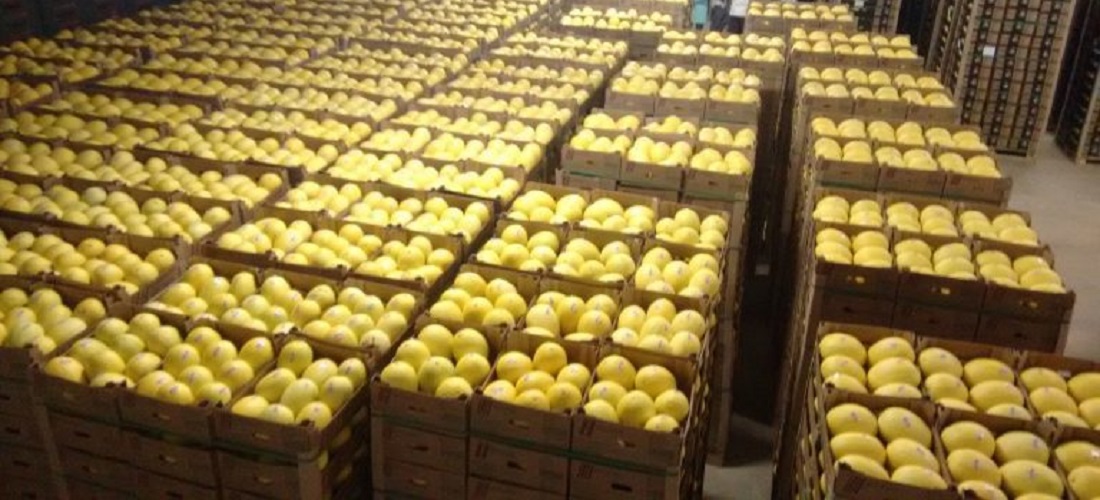
Brazil’s top melon producer set to export 10% more to Europe
Sep, 19, 2022 Posted by Gabriel MalheirosWeek 202237
The company Agrícola Famosa, based in Mossoró, Rio Grande do Norte, the largest producer and exporter of melon and watermelon in Brazil, is set to increase fruit shipments to Europe by more than 10% in the current harvest season, which started in August 2022. According to CEO Carlos Porro, the company hopes to have exported 220,000 tonnes by April 2023, more than half of the total 400 thousand tonnes the state expects to ship, with estimated revenue of R$ 1.1 billion.
The info above was disclosed by the Rio Grande do Norte Fruit Growing Executive Committee (COEX) during an event held on September 1st.
According to Porro, the increase is thought to be the result of three factors: 1) the quality of fruit yields is very satisfactory; 2) productivity is very high; 3) demand in Europe is high because its harvest was completed earlier than usual due to the heat that plagued the crops, combined with the loss of productivity area in key producing countries, such as Spain.
To get closer to end customers in the United Kingdom, the second largest destination for Famosa’s fruit in Europe, the Brazilian company created Melon & Co. “In its first year of life, the company sold 50 million pounds to British supermarkets,” celebrates Porro.
Until last year, Famosa only outsourced containers for export and faced numerous delivery delays due to logistical embargoes since the outbreak’s inception. This year, Famosa decided to charter six ships for the company’s exclusive shipment of the fruits grown. The products take between 2 and 3 days to arrive at the port of Mucuripe. The goods arrive in Vigo (Spain) in 8 days, Dover (England) in 11 days, and Rotterdam (Netherlands) in 12 days.
“Charter ships keep coming and going from Europe. It increased our export cost by 15% to 20%, but it’s worth it because the fruit arrives with better quality and when the customer needs it,” he says.
Famosa increased sales to the United States, bringing in 8,000 tonnes this season. Still, the logistical problem with containers, ships, and ports, says the CEO, prevented the company from continuing melon exports to China, a market first opened in 2020. “We will try to resume these shipments next year.”
Another stalled market is Russia. According to Porro, exports were not significant but growing. Since the start of the war against Ukraine in February, Russia has stopped receiving direct exports and has become reliant on cargo that arrives in Rotterdam. According to Porro, the conflict is a source of concern because it has the potential to raise energy prices and reduce consumption in Europe.
See below the track record of Melon, Watermelon, and Papaya (HS 0807) shipments from Brazil, in containers, from January 2021 to July 2022. The data is from DataLiner.
Melon, Watermelon, Papaya Exports | Jan 2021 – Jul 2022 | TEUS
Source: DataLiner (click here to request a demo)
According to data from the Food Consumption Panel of Spain’s Ministry of Agriculture, Fisheries, and Food, consumption of fresh fruit at home fell by 13.6% from January to June 2022 compared to the same period in 2021 and by 0% compared to 2019, the year before the pandemic.
Agrícola Famosa does not fear at all the measure approved by the European Parliament to suspend the purchase of products linked to deforestation. “We invested in sustainable production and certification of our fruits for more than a decade, when ESG was not even mentioned.”
During this harvest, the company expects to plant 11,500 hectares of melon and watermelon alone, accounting for 90% of the business, including banana and papaya production. On the domestic market, there are approximately 100,000 tons of fruit. However, Porro guarantees no quality difference between the fruit exported and the fruit that remains in Brazil. “Only the size changes because Brazilians prefer larger melons and Europeans prefer smaller fruit.”
Drop
The partner of Famosa and institutional director of the Brazilian Association of Exporters of Fruits and Derivatives (Abrafrutas), Luiz Roberto Barcelos, says that, in total, Brazilian exports of melon and watermelon should drop between 15% and 20% this year in terms of volume compared to the previous harvest.
“There was a significant increase in production costs and a drop in the value of the euro. This reduces the exporter’s margin, which is more cautious due to the European crisis and the resulting increase in energy costs. Furthermore, the cost of ocean freight has skyrocketed. However, the fruit should be more expensive for Europeans, which can offset the drop in the value of exports.”
According to data from the Ministry of Agriculture’s Agrostat platform, there has already been a sharp drop in both revenue and volume in Brazilian melon and watermelon exports in August compared to the same month in 2021. Shipments of the two fruits generated US$ 686,200 in revenue, compared to US$ 1.59 million the previous year. Then, however, it decreased in volume from 5.19 thousand tons to 2.89 thousand.
From January to August this year, Brazil’s revenue from fruit exports was US$ 567.6 million compared to US$ 653.4 million in the same period in 2021. In terms of volume, there was also a drop: from 652,120 tons to 563.07 thousand tons. According to Barcelos, shipments of melons and watermelons represent almost 25% of the country’s fruit export revenue.
-
Ores
Aug, 24, 2020
0
70,000 tonnes of illegal manganese ore apprehended at port in Pará
-
Grains
Jun, 03, 2024
0
China takes nascent steps towards sourcing sustainable farm products
-
Other Logistics
Apr, 24, 2023
0
Cargo flow on Brazil’s North-South Railway grows 18% in 2022
-
Meat
Jan, 24, 2022
0
Minerva is granted authorization to export beef to the US from unit in SP


